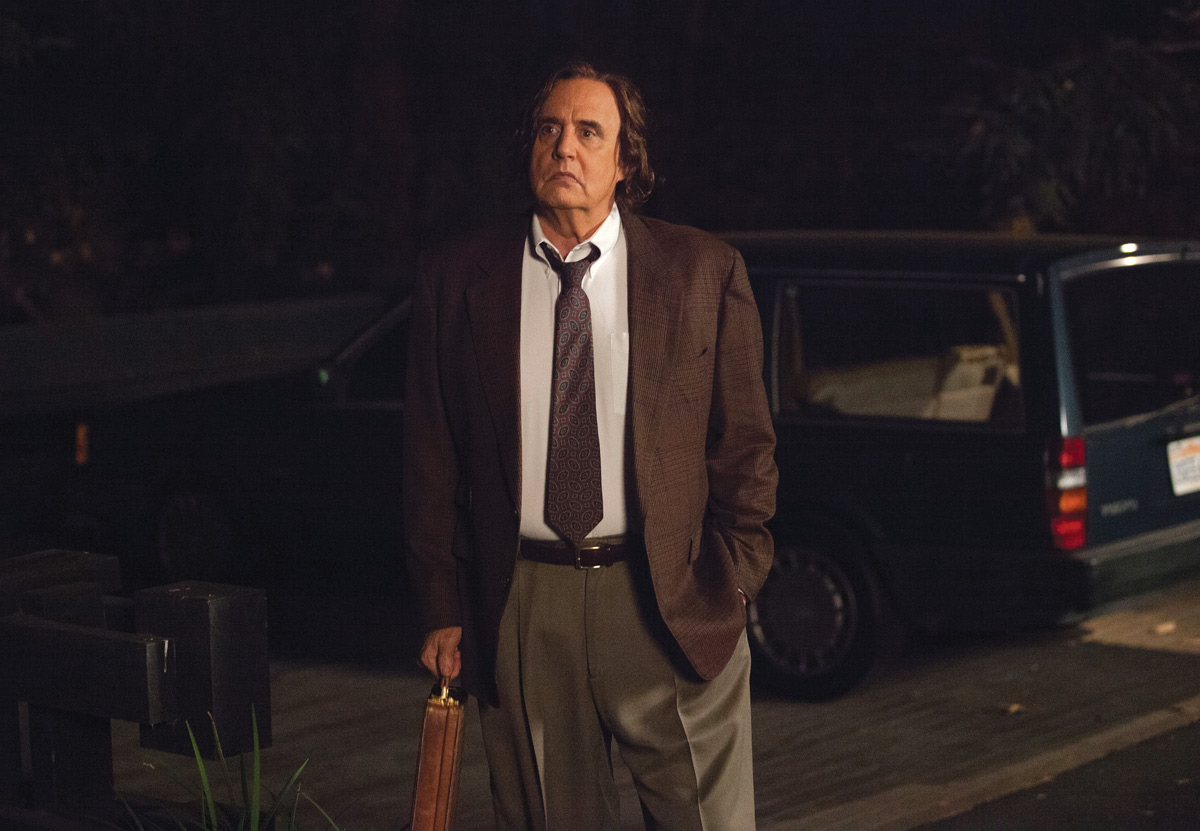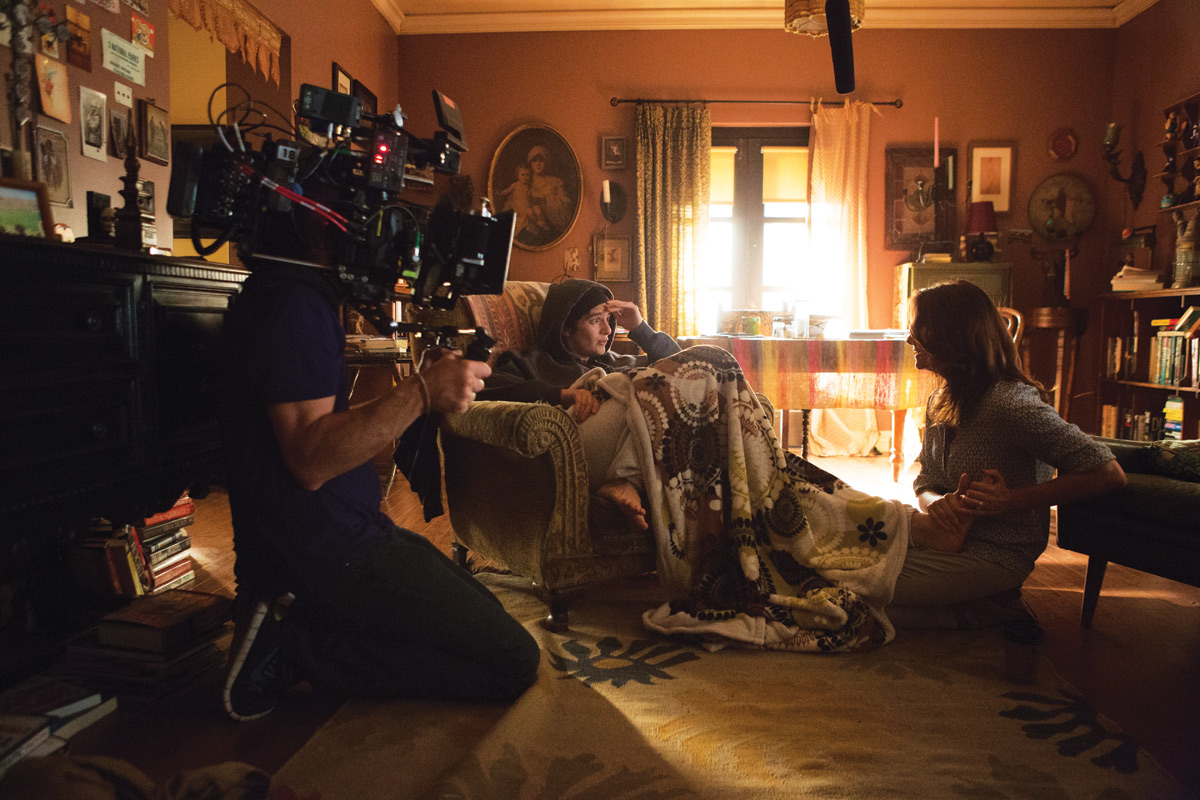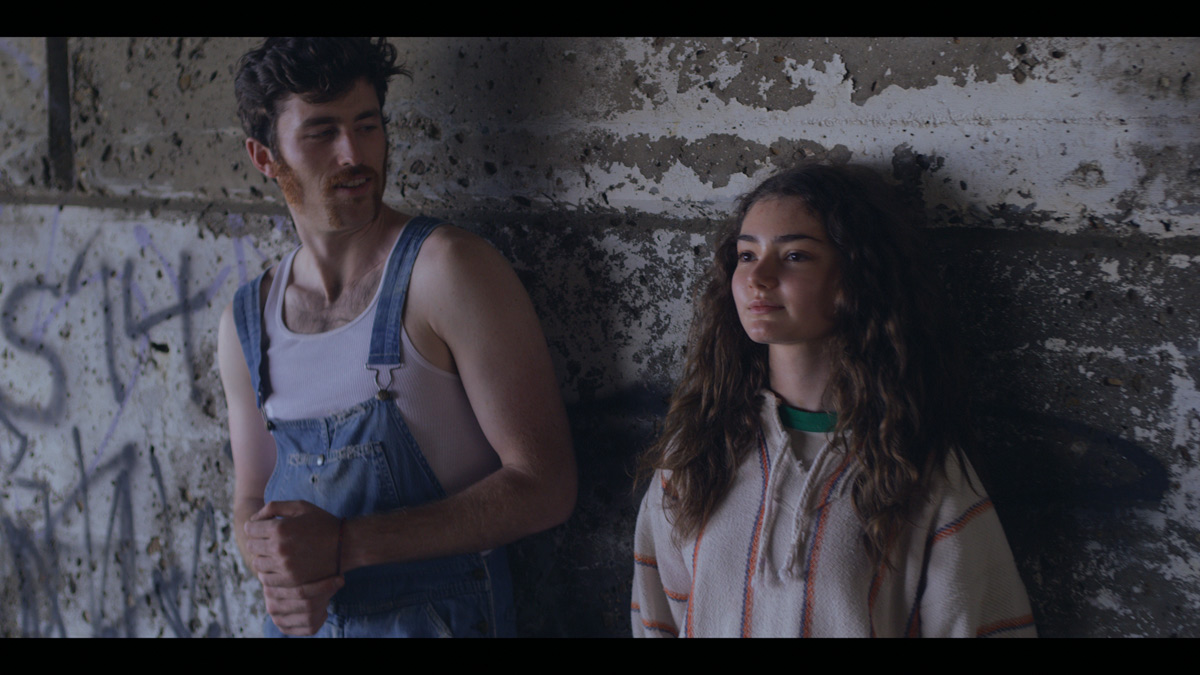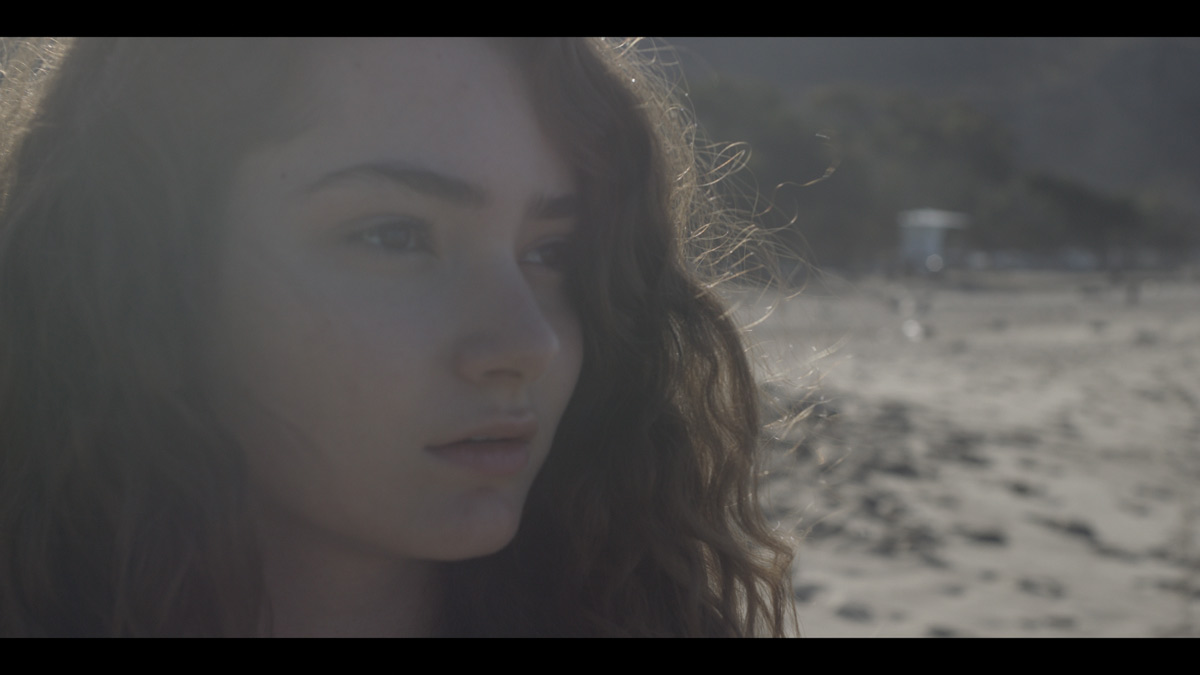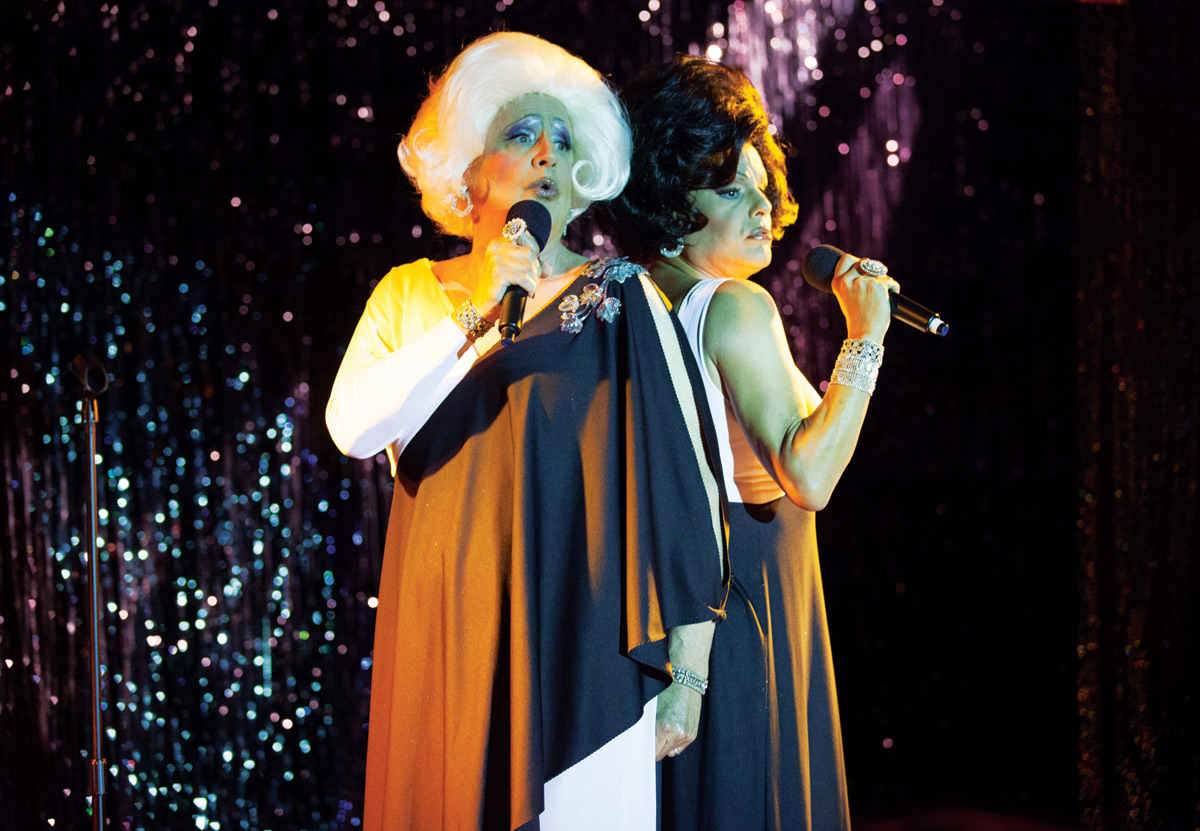Amazon’s Golden Globe–winning streaming series, Transparent, has changed the face of television
When NetFlix’s original streaming series, House of Cards, received 23 Primetime Emmy nominations in its first two seasons (2013/2014), Hollywood experienced a seismic shift in the future of televised content. But when Amazon Studios won two Golden Globes this past January (Best Comedy TV Series and Best Comedy Actor for Jeffrey Tambor), the industry nearly spun off its axis.
The difference? House of Cards, with its slew of A-list Hollywood names (including David Fincher, Joel Schumacher and Eric Roth) looks and feels like a high-end network show, equally comfortable on any 3-letter network, from HBO to ABC. The main ground the series broke was the platform on which it came into homes.
Transparent, on the other hand, is as far off the grid as TV gets.
Created by Jill Soloway and shot by Local 600 DP Jim Frohna, the show, filled with lyrical, meandering character moments and plenty of graphic sex, looks more like an edgy independent film than anything else on television, regardless of the platform. That makes sense: Soloway and Frohna’s first collaboration was the 2013 Sundance feature Afternoon Delight, whose naturalistic lighting and Cassevetes-esque handheld camera was a template for Transparent. In fact, Soloway describes developing Transparent’s first season as less like building a network TV show and more like a five-hour movie.
“The storylines unfold at their own pace, and we have great freedom to include details in the first few episodes that won’t pay off until much later,” she describes. “The nuanced moments, the little life-mystery things that happen in between the moments – there was room for all of that knowing that there would be that languorous feeling of taking your time as you watch.”
Jeffrey Tambor, in the show’s titular role is (literally) a trans-parent, a retired college professor in his 60’s named Mort Pfefferman who comes out to his three grown children and ex-wife as the transgender Maura. In the show’s pilot, he tentatively takes the first key steps to liberating the woman locked inside.
“The evolution [of Transparent] was inspired by Louis C.K.’s show on FX,” Frohna shares over lunch in a West L.A. eatery. “[Louis C.K.] basically said, ‘I have stories I want to tell.’ And FX responded that the if budgets stayed modest, he could do it his way.”
Frohna says that show kicked off a wave of television that “put the artists and storytellers” first. “When we started Transparent,” he adds, “Amazon Studios was essentially a network made up of [Director] Roy Price, and [Head of Comedy Programming] Joe Lewis, and that’s it. Jill and I were astonished at how they just left us alone to do our very best work.”
Lewis, whose background includes development at Comedy Central and creating his own cloud TV network (Bark), says Soloway’s Afternoon Delight “exactly hit the mark with what we wanted to do at Amazon – present stories that are funny, risky, sad, totally authentic, and really great to look at,” he offers.
“My biggest input has been to help adapt the series to an archival and novelistic form of television,” Lewis continues. “For example, in the pilot script, Maura comes out to the whole family on page 8, and in the show it was moved to the end and to only one of his children, which is a more gradual process. As to the archival nature, and this speaks to the show’s aesthetics and Jim’s contributions, Amazon wants to create television that’s more like cinema; you can watch it again in 20 years – not just once on Thursday nights at 10 p.m. – and it still feels fresh and amazing. Even if 20 years from now,” he laughs, “our televisions will be hovering and piped directly into our brains.”
Watching the characters on Transparent founder through one gender-bending sexual encounter after another may make you think they’ve lost their brains. There’s the oldest daughter, Sarah (Amy Landecker), who reignites a lesbian love affair from college, leaving her husband and children by Episode 2; there’s the middle kid, Josh (Jay Duplass), who, in his early 30’s, still carries on an affair with the nanny who seduced him as a teenager (Josh also knocks up a young singer/songwriter who later aborts the baby) and the youngest, Ali (Gaby Hoffmann), whose goal in one episode is a drug-inspired threesome with her physical trainer and his roommate. (They pass.)
But despite all the sex and nudity, Frohna says he and Soloway were after a level of intimacy that went deeper than just the physical. “The mantra, in terms of shooting style, lighting and how we approached every scene was authenticity,” describes Frohna, who adds that he was pleased to have the technology come along to support their endeavor.
“We shot the pilot on the Alexa,” he adds. “But for the sex scenes and more-intimate moments, we wanted to scale things way down in terms of the production machine. I hadn’t ever shot with the Canon C-300 but chose it for its compact size. I could cradle it to my chest and stay really connected to the actors.”
When the show went to series, and Amazon dictated all original content would be shot 4K, Frohna did a blind camera test. “Everyone was smitten with the C-500,” he recalls. “It doesn’t shoot internal 4K – we had to add an AJA recorder. But right out of the camera, there’s no antiseptic, digital sheen. It reminds me of Fuji film stock.”
Soloway says she had a clear idea of what the show should look like. “I make collages on the wall with color stories for different storylines,” she begins. “Ali’s life and the Pfefferman house had an orange-and-olive palette. Josh’s world was whites and grays. Sarah’s world was aqua, and Shelly’s was lilac and hospital green. Natural light. No moveable walls. Real source light. Everything had to work like a location.”
Since 60 percent of the series is shot on stages at Paramount, Frohna says his goal was to shoot and light as if the entire series was done on practical locations, “and that meant big sources outside the sets,” he observes. “This gave the actors the freedom to move around and really occupy the space, make it their own.”
Lenses were chosen to support the show’s “lived-in” feeling, with older Zeiss Super Speeds serving as the main glass. Many flashback scenes run throughout the series (focused mainly on Maura and the key events that led to her transformation). For these scenes, Frohna used a rare set of 80-year-old Leica Leitz cinema lenses that Panavision lens specialist Guy McVicker had refurbished – the only one of its kind in town.
“There was a distinct quality, a gentleness or warmth to the Leitz lenses that just felt right for detailing the moments and steps that Mort took on the way to emerging from the shadows,” says Frohna, adding, “Given their age, these lenses, without announcing themselves, gave us the look of ‘memory.’”
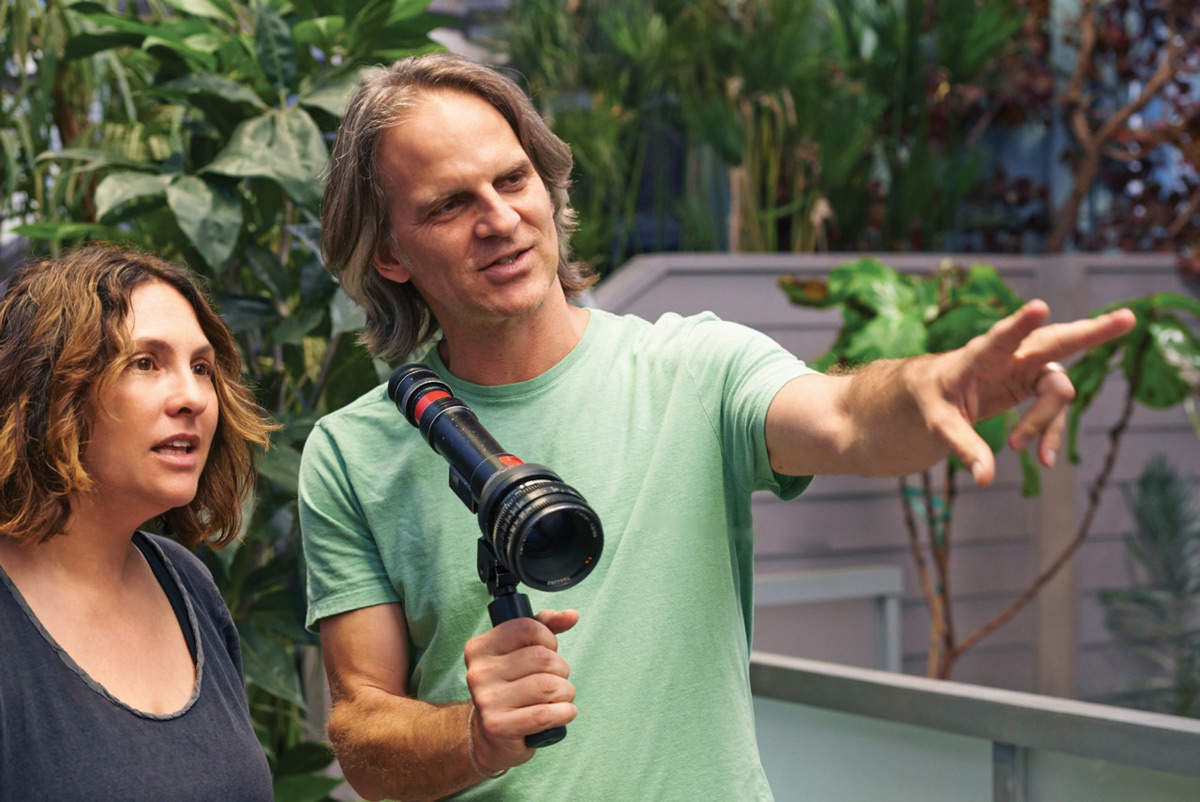
Transparent’s preproduction also traveled well off the grid. Soloway, Frohna and the cast underwent multi-day workshops with consulting producer Joan Scheckel, who has helped many indie writers, directors and actors find the core elements of their stories. The workshops, equal parts improv, dance, and psychotherapy, were shot by Frohna with a Canon 5D. Stills and video from these sessions were referenced later on to discover moments of uncharted character revelations.
“When Jim is shooting, he’s doing a specific technique we learned at Joan’s, where the camera is quite emotional,” Soloway explains. “He is playing a playable action – just like the actors. And when I adjust an actor’s action, it’s always [with a] feeling verb about what the character is doing to get what he or she wants. I will make those same adjustments with Jim. I’ll shift his action and that will transmit unconsciously into the camera movement.”
Frohna credits the unusual preproduction with helping him understand the show’s emotional dynamics. “Judith Light’s character, Shelly, for example, is shut out of her (then) husband’s life because of this huge secret,” he describes, “so she’s desperately lunging at her children, who are equally confused. Seeing that play out in the workshop informed the energy and blocking of how some of her character’s scenes were shot.”
Soloway says the partnership thrives because “Jim knows how to give himself over to the emotions in a scene. Because he goes there, the actors will as well. Jim is never observing or scrutinizing with the camera; he’s in there just as deep as are the actors.”
Two prime examples of Frohna’s sensitivity (abetted by new camera technology) are on display in Episode 8, which is told entirely in flashback and revolves around Ali’s Bat Mitzvah being cancelled because Mort sneaks off to a camp for cross-dressers. The 13-year-old Ali ends up alone at the beach, where she meets an older guy who has beer and a pick-up truck; she’s never been so far away from home by herself.
As Frohna describes it: “Jill, myself, my 1st AC Shelly Gurzi, and the actress playing Young Ali all wandered off down the beach. The crew assumed we’d be right back. But we ended up discovering this amazing cave-like space under an old bridge, and Jill was inspired to shoot a scene with Ali and the older guy wrestling in the sand right there. The lightweight, low-profile C-500 made all the difference in being able to respond spontaneously. When we came back to base camp, the AD and the crew [which included operator D.J. Harder, assistants Nick Fischer, Zoe Van Brunt, and Steve Marshall, loader Peter Brunet, additional assistant Bodie Scott-Roman and unit still photographer Beth Dubber] were all ready to shoot the scene, and Jill told them “No, it’s OK. We just got it.”
Soloway says the beach adventure was a “perfect example of what happens when you allow the emotional truth of a scene to have the edge over its technical composition. “From the moment Jim and I found that cave,” she shares, “we knew we wanted to shoot there, without any extraneous distractions.”
The other key moment in the same episode occurs at the cross-dressing camp, which Maura visits with Marcy (Bradley Whitford), another closeted family man. Maura and Marcy meet up with Connie (Michaela Watkins), a woman who’s accepted her cross-dressing husband, and retreat to a cabin for drinks and dancing.
“Jill is tucked in the cabin’s tiny bathroom [shot at a camp in Malibu], along with the AD, script supervisor and Shelly pulling focus,” Frohna recounts. “I’m in the room with the actors doing this dance – both literally in the scene and with the camera. Live music is playing. As things develop, you see Maura and Connie become kindred spirits, and Marcy as the jealous outsider. Even after Jill yelled cut, Jeffrey kept moving with the music, and so I kept shooting.”
“I never allow phrases like ‘running out of light’ or ‘running out of time’ to take over the set,” Soloway offers by way of explanation. “Sometimes I’ll call cut and the AD will call ‘moving on!’ and Jim will see or feel something and keep on shooting. That’s how he got Ed’s final moments [at the conclusion of Episode 9]. I still can’t watch that without sobbing.”
While Transparent is a comedy, its organic approach to storytelling inevitably leads to rays of (poetically rendered) sadness. One scene (referenced by Soloway above) is when Shelly Pfefferman’s second husband, Ed Paskowitz (Lawrence Pressman), is on his deathbed. The family is gathered in Shelly’s condo, where she’s been nursing Ed through years of dementia. As talk of an impending funeral swirls up family conflict, Ed wanders out the front door, unseen. He staggers across the condo grounds, toward a small island park, as a literal and metaphoric twilight descends.
“The script indicated that we would ‘become Ed’s POV,’” Frohna reveals. “So I decided to actually put on Ed’s pajamas and slippers to get a better feel for how he would be staggering through this environment, to literally ‘take his last steps.’”
Frohna says he went even further into Ed’s state of mind by letting the focus intentionally wander. The result, he reflects, was a fortuitous coming together of elements, as if a greater spirit was watching over the show.
“From the moment I read the script, I envisioned the time of day when the last gasp of light is in the sky and the trees and the island path would be lit by the existing practicals,” Frohna remembers. “But in the harried pace of the shoot, I failed to realize, until driving to set that day, that we were supposed to shoot Ed’s POV at 5 p.m., when the summer sun was still blazing.” Earlier scenes ran long, threatening to push Ed’s POV to another day. So, Frohna convinced the producers that while everything else was being wrapped, they could shoot the scene with no lighting or grip support.
“I knew the C-500 well enough by that point to push the ISO to 3200, but that would be with the island practicals lit, which had not yet come on,” he continues. “We had twenty minutes or less before they were going to pull the plug. So, with the camera on my shoulder, I rushed toward the island. And, literally, as my foot hit the first of the paver stones that cross the water to the island, the path lights all went on.”
Frohna says the shot was aided by the Canon’s sensitivity. “It often would see [deeper into the shadow areas] than my eye could see,” he observes. And when I was shooting at high ISO’s [like Ed’s POV at 3200], the image didn’t look noisy. It actually became more granular, like film.”
As those who binge-watch Transparent can attest (a model Soloway prefers to indie theatrical marketing and distribution, particularly when coupled with social media), the strains on the Pfefferman family also become more granular.
Episode 7 features Maura performing an elaborately rehearsed duet onstage at the LGBT Trans Talent Night, where she hopes to fully connect with her kids. But they stay a short time and leave. Frohna says that scene, which includes Maura’s guide through the transgender world, Davina (Alexandra Billings) also up onstage, was lit with an “old follow-spot an electric got from his church and some cheap theatrical lights.”
The final episode, when all are gathered for Ed’s funeral – one of only two times the entire family appears together – was lit with a similar reverence for authenticity. When the sets were first being built, Frohna spoke with his grip and gaffer about the sun never shining directly into the family home.
“The light would always be a little too dim, like the family’s history,” he explains. “At Ed’s shiva [the gathering after the burial], we see the sun coming into the house for the first time, when the many secrets have been exposed.”
Certainly after Transparent’s success, Amazon Studios is no longer a secret. “If you told me five years ago that I’d be making a series for Amazon and that people would be watching it, I wouldn’t believe it,” Soloway admits. But by Season One’s conclusion, the writer/director says she can’t imagine making the show with anyone else.
“Offering this kind of pure art-making is an amazing antidote to Hollywood studios’ suffocating reluctance to back anything that hasn’t been calibrated for success to within an inch of its life,” Soloway concludes. “The only way for this industry to move forward is for studios to trust artists to tell us their stories the best way they know how.”
Lewis agrees. “I don’t know what the next platform will be,” he surmises, “but I do know [Amazon’s streaming model] allows us to work with visionaries like Jill Soloway and her creative team. It’s a very cool place to be: kind of like Hollywood cinema in the 1970s, except that distribution model only allowed for a limited time and date. [Amazon] can pull back the curtain over a longer period of time and give [our customers] the feeling of a true discovery that they crave.”
by David Geffner / photos by Beth Dubber


